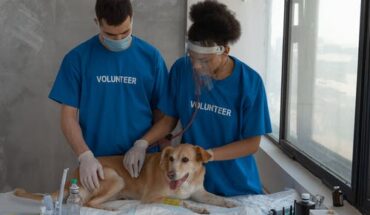The outdoors is a fantastic method of strengthening your bond with your dog while keeping your dog active and healthy dogs are born explorers, which is why taking them with you on your adventures is a perfect fit for them. Taking your dog on a hike with you can enrich your life and your pet, but only if you follow the appropriate steps.
Always keep a tight leash on your dog and take the essential precautions to ensure security and safety regardless of the terrain throws at you. Trails have dangers, such as uneven and steep terrain and potentially deadly fauna.
How to make a hiking experience for your dog safe?
There’s a reason why canines like the outdoors so much. They are a substitute for the restroom or playpen. And when taken outside, they can travel worldwide and make new friends. Alongside eating and being loved, it is their favorite activity. Continue reading to find out how to keep your pet safe on the trail.
1. Your dog should be prepared for the hike.
Although hiking can be enjoyable, it can get physically demanding, so ensure your pet is in good condition before setting out. The season’s temperature should be assessed, as overworking in the day’s heat can result in heat stroke.
Your dog’s stamina will need to be re-energized when this is your first time on a hike. Take him on long walks around the house before moving on to longer walks outside. You can gain more detail by reading blog posts and articles online about the dangers of hiking with your pet.
2. Be aware of trail etiquette.
Make sure you read the rules before embarking on a hike. If you want to be sure you know where you can bring your pet and when a leash is required, it’s best to phone ahead, look up the park website, or talk to an employee once you’re there. You must then follow the guidelines of the trail.
It’s essential to clean up after your dog, even when you’re out exploring the forest. The garbage can be removed from the park using bags made of plastic. You can also place the garbage 200 feet from the roads, campers, or water supplies. If you’re already settled with the location or destination of your hike, you need to contact a nearby emergency clinic in case an unforeseen event occurs.
3. Be sure to take safety and preventive measures.
Before getting close to local wildlife, be sure your pet is current on its vaccinations. A first-aid kit is also good if your dog sustains an injury. In this manner, you can tend to the minor injuries of your dog until you can take the animal to a vet.
Bring doggie boots to protect your dog’s pads on rugged terrain. To stop Lyme illness in your dog, protect him from ticks before hiking. There are tick and flea products that keep your dog from being bitten outside.
4. Watch out for dangers along the trails.
Keep an eye out for things your dog may eat which could cause harm to her, such as the poop of dogs, mushrooms, pinecones, dog poop, and similar substances. Leash your dog to prevent the dog from chewing on something that could be dangerous.
Find out if snakes are around the area you intend to hike and learn about first aid for a snake bite. Be sure to keep your dog from drinking from any lakes, streams, or rivers you might encounter. Splashing in contaminated water can cause illness. Be aware of signs of illness.
5. Make sure you have enough water and food during your trek.
Doing your dog’s job in the field all day long means they’ll require more nutrition and water than usual. Bring plenty of your dog’s favorite food and plenty of clean water. On hot days, monitoring the amount of water your dog drinks is crucial.
Remember to take ample breaks to ensure that you and your dog can take a break and relax. It’s best to take breaks to eat so you can have a wonderful time with your dog.






